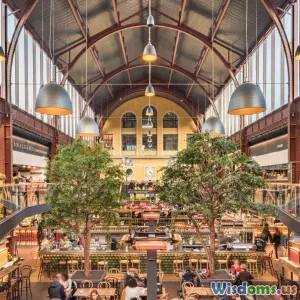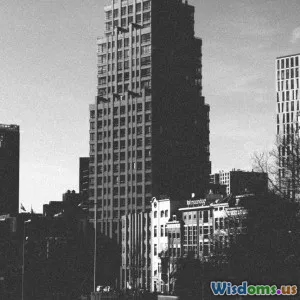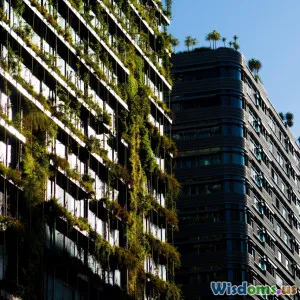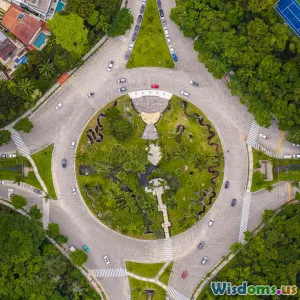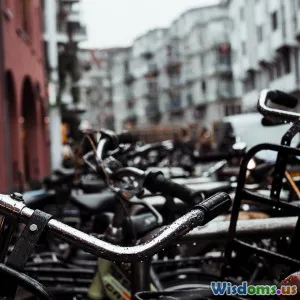
Eco Friendly Urban Design Trends
8 min read Explore cutting-edge eco-friendly urban design trends shaping sustainable cities for a greener future. (0 Reviews)
Eco Friendly Urban Design Trends: Shaping the Cities of Tomorrow
Urban centers around the world are the beating hearts of our societies, sprawling hubs where millions live, work, and thrive. However, this urban concentration has also introduced significant environmental challenges—rising pollution levels, heat islands, and unsustainable resource consumption, to name a few. Addressing these challenges requires forward-thinking architectural and urban design strategies that prioritize sustainability and ecological mindfulness.
In this article, we dive deep into the latest eco-friendly urban design trends that are reshaping how cities look, function, and interact with nature. By exploring innovative concepts and real-world examples, we aim to inspire planners, architects, and citizens alike to embrace sustainable solutions that foster healthier, more resilient urban environments.
1. Introduction: Why Eco-Friendly Urban Design Matters
With more than 55% of the global population now living in cities—a figure projected to reach 68% by 2050 according to UN data—the urban footprint is massive and growing. This growth has resulted in severe environmental externalities, including intensifying urban heat island effects, increased energy consumption, and loss of green space.
Eco-friendly urban design focuses on integrating climatic responsiveness, renewable energy, resource conservation, and increased biodiversity into urban spaces. This holistic approach not only mitigates environmental harm but also enhances quality of life, economic viability, and community health.
As Jane Jacobs famously said, "Cities have the capability of providing something for everybody, only because, and only when, they are created by everybody." Today, the "everybody" must include environmental considerations to ensure urban places thrive sustainably.
2. Integrating Green Infrastructure: The Backbone of Sustainable Cities
Nature-Based Solutions for Urban Resilience
Green infrastructure refers to networks of natural and semi-natural systems integrated within a city—think parks, trees, green roofs, and rain gardens—to manage urban environmental challenges.
An illustrative example is the Cheonggyecheon Stream Restoration Project in Seoul, South Korea. This ambitious initiative transformed an overbuilt, polluted highway corridor into a vibrant ecological corridor, reducing urban heat and improving air quality.
Research by the Environmental Protection Agency (EPA) shows that green urban spaces can reduce surrounding temperatures by up to 2°C, combating heat island effects that disproportionately impact vulnerable populations.
Multi-Functional Parks and Urban Forests
Modern design trends emphasize the need for multifunctional green spaces that provide stormwater management, recreational areas, and wildlife habitats simultaneously. Cities like Vancouver have successfully incorporated urban forests along streets and residential neighborhoods, enhancing air filtration and fostering biodiversity.
3. Energy-Efficient Building Design: Reducing Carbon Footprints
Passive Design Strategies
Architectural innovation plays a crucial role in eco-friendly urban design. Passive solar buildings, designed to maximize natural light and ventilation while minimizing heat loss, demonstrate significant energy savings.
For instance, the BedZED (Beddington Zero Energy Development) community in London utilizes south-facing windows, thick insulation, and heat recovery ventilation to reduce energy consumption by 81% compared to typical buildings.
Net-Zero and Positive Energy Buildings
The push towards buildings that generate as much—or more—energy than they consume is accelerating. Solar photovoltaic panels integrated with smart building management systems allow real-time optimization.
The Bullitt Center in Seattle, dubbed the “greenest commercial building in the world,” features solar panels, rainwater harvesting, and composting toilets, setting a benchmark for sustainable office design.
4. Smart Urban Mobility and Reduced Carbon Emissions
Prioritizing Pedestrians and Cyclists
Replacing car-centric infrastructure with pedestrian-friendly streets and bike lanes reduces emissions and promotes healthier lifestyles. Copenhagen, for instance, commits to becoming carbon neutral by 2025, propelled by bicycle infrastructure enabling 62% of residents to bike to work or school.
Electric and Shared Mobility Integration
Urban planners integrate electric vehicle (EV) charging hubs and shared mobility services seamlessly into neighborhood designs. Singapore’s extensive smart transport network illustrates how data-driven mobility can reduce private car ownership while enhancing transit efficiency.
5. Circular Urbanism: Waste Reduction and Resource Efficiency
Reusing Materials and Modular Construction
Adopting circular economy principles, cities are focusing on repurposing building materials, reducing demolition waste, and embracing modular construction techniques.
For example, the NEST Building in Switzerland is a research platform testing modular units composed of recycled construction waste, aiming to demonstrate that urban growth can coincide with waste reduction.
Urban Agriculture and Local Food Production
Integrating vertical farms and rooftop gardens into urban design supports local food production, diminishes transportation emissions, and reconnects residents to nature. In Detroit, urban farms have revitalized empty lots while improving food security.
6. Community-Centered Design and Social Equity
Sustainability is not solely environmental but also social. Eco-friendly urban design includes community input and equitable access to green spaces and services.
The High Line in New York City exemplifies this trend—a repurposed elevated rail line transformed into a public park that fosters cultural engagement and environmental stewardship.
Inclusive design combats the risk that green amenities become exclusive, advocating for participatory planning where all voices shape the sustainable urban future.
7. Conclusion: The Road Ahead for Eco-Friendly Cities
Eco-friendly urban design embodies the marriage between technology, nature, and human-centric planning. The trends outlined—green infrastructure, energy-efficient buildings, smart mobility, circular resource use, and inclusive community design—are forging a blueprint for resilient, vibrant cities.
Cities like Copenhagen, Seoul, and Singapore prove that ambitious goals backed by innovative design yield measurable environmental and social benefits. The challenge lies in scaling these approaches worldwide, integrating local contexts and cultures.
Ultimately, building sustainable urban environments demands a concerted effort from policymakers, architects, planners, and citizens. Understanding and embracing these trends empower us to contribute actively towards greener, healthier cities that nurture both people and the planet.
Together, our urban future need not come at nature's expense; with thoughtful design, cities can become powerful allies to our environment.
Rate the Post
User Reviews
Other posts in Sustainable Architecture
Popular Posts











